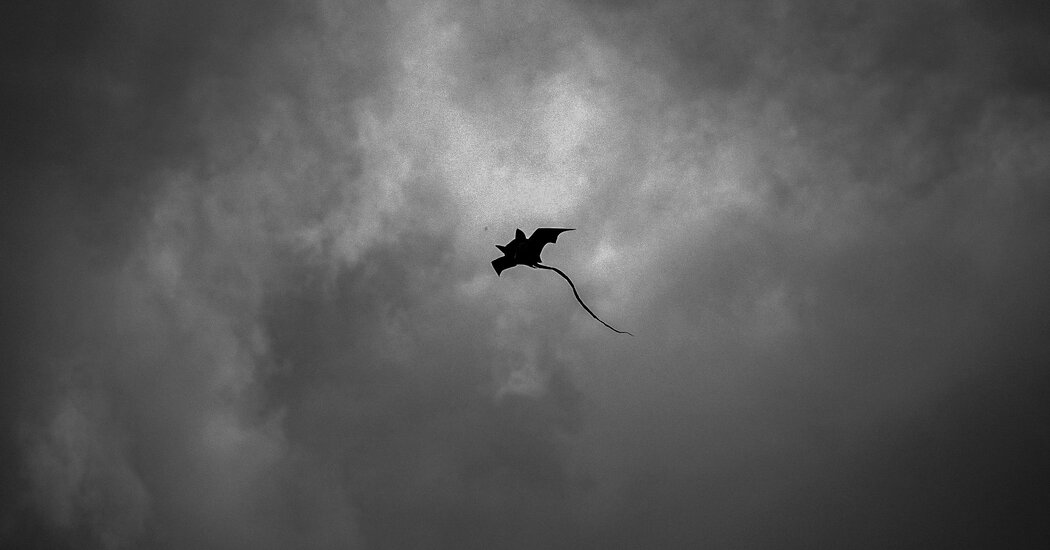Go Birding With The Times This Summer
Our understanding of birds has been profoundly shaped by the work of everyday people. After all, anyone can step outside and pay attention to an untamed world swooping above.
This summer, we’re inviting readers, both new and experienced birders, to participate in a science project we are working on with the Cornell Lab of Ornithology. We will be gathering observations about the birds around us, filling in data gaps and giving researchers a clearer picture of biodiversity.
It’s important work. Nearly half of all bird species worldwide are known or suspected to be in decline, and climate change could accelerate this trend. By gathering data like this, you’ll help inform decisions about the conservation and study of birds.
For beginners, we’ll provide a series of challenges in the next few weeks aimed at getting you on the path toward contributing scientific data.
If you’re an experienced birder, we have a bit more to ask. Cornell’s scientific database typically receives fewer birding observations in the summer. So we’d like for you to submit as often as you can, even if it’s just to record the common birds in your area. For an extra challenge, go beyond your usual hot spots to areas where data is sparse.
The project will run from now to September. Sign up now to connect with a global community of readers, scientists and researchers; engage in online discussions; and share what you’ve learned to help others. You’ll also hear about virtual events, like this one. And maybe even discover a new way of seeing nature.
To get started, tell us a little about yourself below. It should take only about two minutes, and sign-up is free.
Almost there!
The next step is to download Merlin or eBird, birding apps from the Cornell Lab of Ornithology. Click the sentence below that best describes your birding experience, and stay tuned for an email with a complete set of instructions.
Please note that Merlin and eBird are third-party apps with their own privacy policies, and The New York Times does not control (and is not responsible for) their content or privacy practices.
Frequently asked questions
What if I’m not sure whether I’m a beginner or an experienced birder?
If you’re new to birding, we strongly encourage you to stick with Merlin for the time being. If you have some experience birding but are new to eBird, we recommend taking Cornell’s eBird Essentials course or at least watching this short video before you start submitting checklists.
How do I participate if I’m new to birding?
After you fill out the form above, look out for an email from [email protected] in the following days. It will include the first in a series of challenges designed to build your birding skills. Eventually, you might take on the challenges for more experienced birders listed below.
How do I participate if I have experience birding already?
If you haven’t already, sign up using the form above and download the free eBird app. Be sure to add #NYT in the comments section of your eBird checklist.
Any observations are helpful because Cornell Lab’s eBird database typically receives fewer submissions during the summer. We’re counting on you, as part of this project, to help fill gaps in scientific data so scientists can better understand changes in bird populations. If you can, focus on these places for submitting eBird checklists:
-
Non-recreational open spaces. Is that sidewalk tree a popular spot for house sparrows? Is that wetland behind a nearby Walmart teeming with life? Try there!
-
Areas away from roads. Most birding checklists occur close to roads. The farther you can get from them, the better.
-
Farms and fields. Rural, agricultural areas are some of the least-birded habitats. Submit checklists from public roads adjacent to crop fields, livestock grazing lands and other cultivated areas.
-
Areas between eBird hot spots. Use the Explore tab in the eBird app to find nearby hot spots, or shared locations where other birders have submitted observations. Go birding in areas between or far from those hot spots.
-
Areas with few observations of a particular species. What’s a common bird species in your area? Look up past reports of that species on the eBird Species Map and zoom in on your city. Then, visit areas without any previous observations of that species and file a checklist.
And remember to add #NYT in the comments section of your eBird checklist.
Will my observations be submitted to the Cornell Lab of Ornithology’s database if I use Merlin Bird ID?
The Merlin app is a reference and learning tool. Observations in Merlin are not recorded in Cornell’s scientific database, eBird. To submit a finding from Merlin to the eBird database, follow the prompts in Merlin.
Can I still be included in The New York Times’s project if I already use the Merlin or eBird app?
Of course! But please sign up using the form above first. Then continue to use the apps as usual. Just be sure to submit to eBird if you are an experienced birder and add #NYT in the comments section of your checklist.
Why do I need to register with The Times if I’m submitting my data to the Cornell Lab?
This will allow us to engage with Times readers specifically.
Do I need to download the Merlin or eBird apps on my phone to submit my observations?
If you are a birding beginner, we recommend the Merlin app as a reference and learning tool, and it will also allow you to share your observations with the Cornell Lab of Ornithology.
If you are an experienced birder, you may submit your observations through the eBird app or via the eBird website on your computer.
I have a question about Merlin or eBird, or I need additional help getting set up! Where do I go?
See here for help with Merlin, and here for help with eBird. For additional assistance, submit a support ticket. Beyond those issues, you can email [email protected].


